The opportunity to review a biography of Major General William Holmes in this journal is welcome, since he is in the top rank of leaders who shaped the military history of New South Wales.
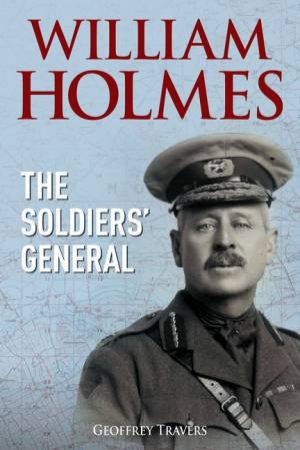
Holmes was literally born into the military, starting life at Sydney’s Victoria Barracks, Paddington, on 12 September 1862, where his father William Holmes Snr, formerly a sergeant in the British 11th Regiment of Foot, was stationed as staff clerk in the Brigade Office of the NSW permanent forces. Holmes Jnr even married into the military at Victoria Barracks, taking as his wife Susie Green, daughter of Henry Green, a Sergeant Major in the NSW Artillery. If family connections feature prominently in Holmes’s career, they are also evident in production of the biography itself. Author Geoffrey Travers is Holmes’s great-grandson and his research drew on an incomplete manuscript by his uncle B J Travers. As expected from such authorship, the biography is generally a vindication of Holmes’s life and career, but even-handed, detailed and scrupulously documented. Travers does not hesitate to level criticism when warranted, such as on the controversial New Guinea caning incident, discussed further below.
Even if the circumstances of his birth suggest that soldiering was in his blood, Holmes, like most Australians interested in military service at the time, was a non-professional ‘citizen soldier’ of the NSW colonial and post-federation militia. Having enlisted in the 1st Infantry Regiment as a volunteer bugler at the tender age of 12, Holmes (known as Billee) sat for the public service examination in 1878 at the urging of his father. This led to a long and distinguished civilian career in the NSW Public Service, beginning as a clerk in the Department of Public Works. Ten years later he applied successfully for the position of chief clerk in the new Board of Water Supply and Sewerage.
The Board was set up by the NSW Colonial Government in association with the Upper Nepean Scheme and Sydney Sewerage Scheme. These replaced Sydney’s failing water supply from the Botany swamps with sources at the headwaters of the Nepean River and its tributaries, the Cataract, Cordeaux and Avon rivers. A waterway consisting of weirs, tunnels, open canals and aqueducts was built to channel water into a giant reservoir at Prospect, from where it flowed by gravity to various points across the city. Over the next twenty years the Board coped with increasing demands for water, sewerage and drainage from Sydney’s rapidly growing population, with Holmes assuming the position of Secretary in 1894. Amongst other accomplishments, he oversaw construction of the Cataract Dam and extensive engineering works to fully separate sewerage from stormwater and drinking water, resulting in Sydney’s mortality rate from diarrhoea, diphtheria and typhoid fever falling by half. In 1895 the positions of chief clerk and secretary of the Board were amalgamated, with the highly regarded Holmes becoming chief executive officer. Travers refers to the military historian Sir Basil Liddell Hart’s observation that the scale and nature of modern war required a ‘big business’ type of commander, for which Holmes’s public service career prepared him well. In this way he was comparable to other successful citizen soldiers like John Monash and the Canadian Arthur Currie.
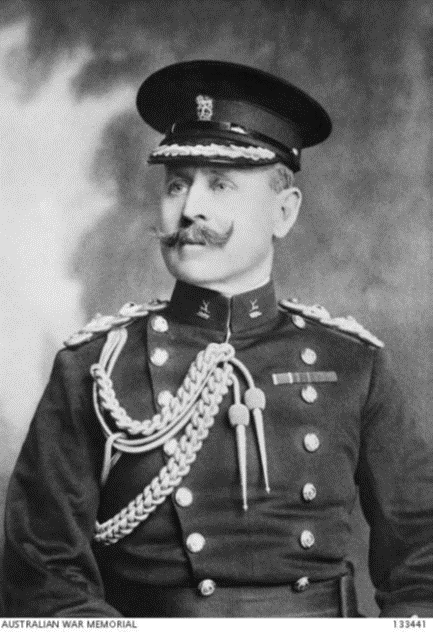
Running Sydney’s water systems was clearly not enough for Holmes, who pursued citizen soldiering with a passion. In 1883 he became a non-commissioned officer in the NSW Infantry regiment and his application for a commission as a second lieutenant was accepted in 1886. Passing the requisite examinations “with flying colours”, he was promoted to first lieutenant in 1890, captain in 1894, placing him in command of a company of 60 men, and acting brigade major in 1895. “Holmes displayed above-average talent as an officer in the volunteer force”, notes Travers, and came to the attention of Major General Edward Hutton, the commanding officer. Holmes leapt at the chance to serve in South Africa (Second Boer War) when the NSW Parliament decided to send a military contingent in October 1899. He was readily granted a six months leave of absence on full pay by the Water Board. So keen was Holmes that he volunteered as a lieutenant to ensure his selection, although he retained his nominal rank as captain. This point saw the emergence of a vexation that recurred throughout Holmes military career. The officer appointed to command the infantry contingent was Captain James Gordon Legge, with Holmes as his senior subaltern. This arrangement, despite Holmes’s seniority, came down to Legge’s status as a permanent or professional soldier, having been attached to the Imperial Army in India, overlaying a tension, sometimes acrimonious, between regulars and militia that would persist into the next century.
The NSW Infantry departed Sydney with much fanfare aboard the troopship SS Aberdeen on 3 November 1899 and arrived in Cape Town on 6 December. They were ordered to join a new Australian Regiment under the command of the Victorian Colonel John Hoad at a station on railway line from Cape Town to Kimberley (under siege from the Boers) which continued northward to Mafeking. At first the British War Office was wary of volunteer troops from the colonies and assigned them to patrolling type communication duties and guarding the railway line. Holmes was witness to some disastrous assaults by British columns against entrenched Boer positions and he developed a low opinion of Hoad (“a nincompoop”) and other Victorians around him. Holmes’s view that, in prevailing conditions, the Australian Regiment was better off as mounted infantry was vindicated when this change was effected in mid-January 1900. Having collected their horses, the NSW Infantry was “put to work” as the NSW Mounted Rifles.
At the head of his company, Holmes did well in a series of hot encounters with Boer forces, showing “a knack for leadership and the ability to display fearlessness in the face of enemy fire.” He seemed, in his own words, “to take to it like a duckling to water”. His men were charged with duties like patrolling and reconnoitering, escorting guns, taking prisoners, and clearing enemy parties from hills (kopjes) and high positions dangerous to the British advance northwards into Boer territory. Holmes’s performance is reflected in his promotion to captain when the 1st NSW Mounted Rifles was formed by amalgamating two existing squadrons with three recently arrived squadrons. E squadron was led by Holmes, consisting of 110 men. They were part of the Australian Mounted Infantry Brigade commanded by Lord De Lisle which in April 1900 joined General Ian Hamilton’s column proceeding to Pretoria. Holmes’s astute leadership in a series of engagements on the way impressed De Lisle. Following the fall of Pretoria, writes Travers:
Colonel De Lisle congratulated Holmes: ‘Well done Holmes. Bravo, I could not have wished to have the job better done.’ De Lisle recommended that Holmes be mentioned in General Hamilton’s dispatches … This was the fourth time Holmes had been Mentioned in Despatches: Hout Nek, Ventersburg, Doorknop and now Pretoria.
Holmes went on to fight in the Battle of Diamond Hill where he led a daring charge under heavy fire, suffering a moderate wound in his right forearm for which he was later hospitalised. De Lisle praised his “great military skill and personal gallantry” to Lord Roberts, Commander-In-Chief of British forces, which may have contributed to the accolades coming Holmes’s way, including the Distinguished Service Order (DSO), the Queens Medal with four clasps and the Volunteer Officers’ Decoration (VD). However, lingering effects of his arm wound and expiration of his leave of absence from the Water Board forced him to leave South Africa prematurely on 18 July 1900. In any event, the Boer War, says Travers:
… offered the chance for many Australian officers, who later became senior commanders in the First World war, to gain invaluable experience and indeed to get to know one another. [William Throsby] Bridges, Legge, Holmes, Henry ‘Harry’ Chauvel, Cyril Brudenell White, [Julius] Bruche, Charles ‘Digger’ Brand, Thomas William ‘Bill’ Glasgow, and Neville Howse are just some of the Boer war veterans who would become senior commanders in the war to come.
On returning to New South Wales in August, Holmes, now a major, was appointed second-in-command of the 1st Australian Infantry Regiment. After federation of the Australian colonies in 1901, the Commonwealth Military Forces were placed under the command of Sir Edward Hutton, comprised of active permanent forces and reserves or citizen forces (volunteer militia). Since the reserves included rifle clubs, Holmes’s election to the National Rifle Association in 1901 afforded him the opportunity to indulge his passion for training recruits in rifle-shooting by means of rifle ranges and competitions. South Africa had convinced him that ‘battlefield musketry’ or marksmanship was an essential, but neglected, skill in modern warfare. He was a noted advocate of training in marksmanship, and at one time became embroiled in public controversies with a prominent sceptic. However he was on the winning side of the argument. His efforts “helped develop the 1st Australian Infantry Regiment as a first-class shooting regiment.” The Commonwealth forces expanded rapidly in the first decade of federation despite teething problems, and the advent of 1912 saw Holmes promoted to brigade commander.
When war broke out in 1914, the British government accepted Australia’s prompt offer of troops but also made a specific request for the Commonwealth to quickly seize German wireless stations in the Marshall Islands, Nauru and New Guinea. An early decision was taken to raise an expeditionary force of around 1,500 for this purpose to be known as the Australian Naval and Military Expeditionary Force (ANMEF), apart from a larger force dubbed the Australian Imperial Force (AIF) consisting of four infantry brigades and three light horse brigades. Holmes, now a full colonel, appears to have been disappointed to miss out on command of an AIF brigade. Europe was considered the main theatre and he was senior to the actual appointees. State rivalries and perennial prejudice against the reserves may have played a part. Holmes was appointed commander of the ANMEF instead.
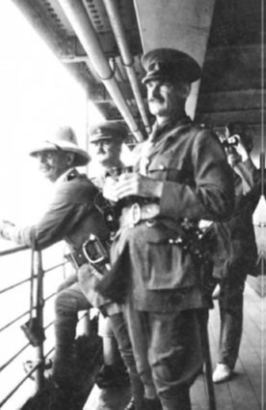
Holmes had every reason to be pleased with the terms of capitulation. Without conceding anything of vital importance, he had persuaded the Germans to transfer the administration of all German possessions in the Pacific, both north and south of the equator, to Australian control. He had pressured the governor to agree to cease all military resistance to the occupation throughout the colony, and consequently to prevent all wireless stations from transmitting further messages and information to the German East Asia Squadron. He had fulfilled all the objectives of the expedition within one month of leaving Australia on the Berrima.
Holmes approached the role of colonial Administrator with typical common sense aimed at preserving the territory as a lucrative asset for the British Empire, except for one possible lapse in judgement. On 26 October a group of inebriated German officials and planters suspected the British Methodist missionary William Cox of spying and, in contravention of the terms of the German surrender, subjected him to a brutal caning. Holmes was furious and ordered the incident investigated. The culprits were subsequently arrested, brought to Rabaul for trial and convicted. Holmes opted for the only penalty which seemed consistent with international law in the circumstances of an occupation, but still commensurate with the crime. The Germans were sentenced to a public flogging in the form of ten to thirty strokes of the cane. When news of the incident leaked out, the Kaiser’s government feigned outrage and called on Holmes to be put on trial. They proceeded to make as much propaganda mischief as possible. Travers concedes that “it was far from a smart move”, and the Australian Government was less than pleased. But this was just a minor misstep in a much larger accomplishment:
… if Australia had not occupied the German possessions south of the equator, they would have been occupied by the Japanese. Holmes’s actions denied the Japanese a huge invasion stepping stone to Australia 25 years later … The occupation of German New Guinea was the first success against Germany in the war. Holmes was the first commander from an overseas dominion in the history of the British Empire to succeed in capturing enemy territory. Furthermore, he was the first to successfully establish and carry on the government of that territory under military occupation.
Despite some ill-informed concerns that Holmes’s terms of capitulation may have let the Germans off lightly, the Australian Government was ultimately persuaded that he had settled the territory’s affairs well and he returned in January 1915. Sydney accorded him and the ANMEF men a rapturous welcome. At this point volunteers were flooding into the AIF and on 16 March 2015 Holmes was appointed to command the new 5th Infantry Brigade with the rank of brigadier general. His son-in-law Captain Jack Travers (the author’s grandfather) and son Lieutenant Basil Holmes followed him from the ANMEF, both into 5th Brigade’s 17th Battalion. On 24 April Holmes and his men paraded through the streets of Sydney to yet more fanfare before each battalion took its turn sailing off to Cairo, the last of them arriving by 26 July.
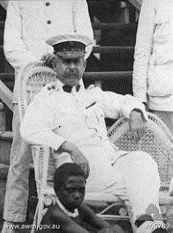
At this time ANZAC, including 1st and 2nd Divisions AIF, had been battling the Turks on the heights of Gallipoli for three months. The call for Holmes’s 5th Brigade to join the rest of Major General Alexander Godley’s 2nd Division at Gallipoli came from Sir Ian Hamilton, commander of the British forces, on 11 August and the men landed at Anzac Cove as soon as 20 August. They went straight into the frontline at Reserve Gully, then Bauchop’s Hill, the Nek and took part in the offensive against Hill 60, during which 18th and 17th Battalions suffered severe casualties. On 28 August, 5th Brigade took over the Anzac line around Russell’s Top. According to Travers:
Holmes faced two problems at Anzac. The first was that his brigade occupied the most dangerous part of the Anzac line. It was in this dangerous sector that Holmes displayed the characteristic for which he became later known in France – regularly visiting the most dangerous points in his brigade lines … By doing this he could analyse the position of both forces, assess the situation, and advise the soldiers … The second problem Holmes faced at Anzac was the re-officering of his brigade.
Failure of the August offensive led to Hamilton’s recall, with ANZAC commander Lieutenant General William Birdwood assuming his place as Commander-in-Chief. Godley replaced Birdwood and Legge took 2nd Division but, apparently due to ill-health, was soon transferred to London. Holmes, “recognized for his abilities since arriving in Gallipoli”, was given (temporary) command of 2nd Division on 22 November. After that he was principally engaged in overseeing the role allotted to his units in the staggered evacuation plan devised by Birdwood’s Chief of Staff, Brigadier General Brudenell White. Holmes’s part was instrumental, since 2nd Division and particularly 5th Brigade were the last to leave. The highly-successful operation saw 41,000 troops withdraw from Gallipoli under the Turks’ noses without a single casualty. Later, in April 2016, Holmes was appointed a Companion of the Order of St Michael and St George (CMG).
Back in Egypt Legge reappeared to resume command of 2nd Division and Holmes returned to 5th Brigade. The continuing streams of volunteers in Australia enabled Birdwood and Godley to create three more AIF divisions, which unleashed a spate of lobbying and politicking by the contenders for a divisional command. Throughout his career, Holmes “was a thousand times too proud to do any such thing”, writes Travers, with the possible consequence that he lost out to Legge (2nd Division), James McCay (5th Division), John Monash (3rd Division), Harold Walker (1st Division) and Herbert Cox (4th Division). Holmes’s militia origins appear to have counted against him again. First and 2nd Divisions (and a New Zealand Division) were grouped as I Anzac Corps under Birdwood and the others as II Anzac Corps under Godley. In March 2016, I Corps, including 5th Brigade, arrived in France.
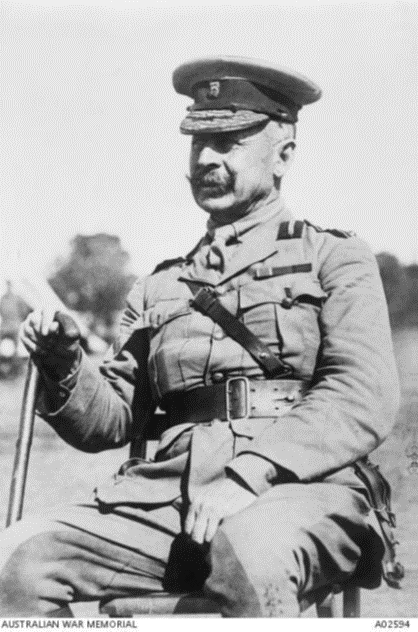
into a scout party and an assault party, the latter further divided into bombing, parapet and blocking parties. Around 30 Germans were killed and a swag of bombs, gas helmets, rifle grenades and intelligence were gained in the raids, which were judged a success. They were conducted to divert German reserves from the Somme offensive British Commander-in-Chief Sir Douglas Haig was planning to the south. He chose the southern end of the British line where the Pozières ridge dominated valleys of the Ancre River to the north and the Somme to the south. As is well known, the offensive of 1 July failed on most of the designated frontage. But there was more success in the south and after the first day Haig decided to abandon operations north of the Ancre and advance north from the Mametz-Montauban area towards Pozières, key to the strategic centre of Thiepval.
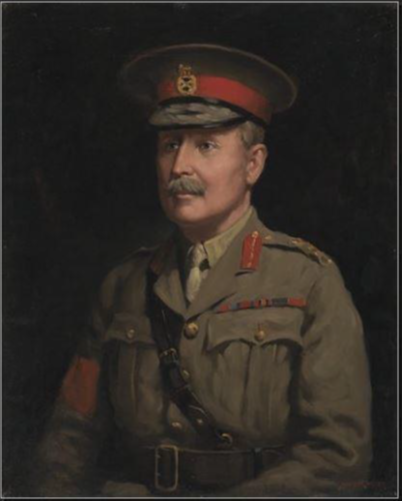
On 17 July Haig assigned the task to Lieutenant Hubert Gough’s Reserve Army and I Anzac Corps was transferred to Gough on the same day. He threw 1st Division AIF into the attack with partial success, and on 25 July they were relieved by 2nd Division. At Gough’s insistence, Legge launched a poorly prepared attack which was largely mauled by ferocious German counter-attacks and 12 days of continuous artillery bombardments, of which 5th Brigade bore the brunt. War correspondent CEW Bean noted that “Holmes’s ceaseless driving and cheery personality … helped keep 5th Brigade going.” According to Bean, he “enforced his standards on the brigade by daily visiting its most dangerous sectors and seeing the duties were being carried out to his satisfaction.” Second Division was relieved by 4th Division which began patrolling onwards to Mouquet Farm, in turn relieved by 1st Division and then again by 2nd Division. Australian units suffered terrible casualties in almost impossible conditions to secure shallow advances. “It is doubtful if any man in the Australian force”, wrote Bean, “would have kept them up to it in quite the same way as did this little citizen General [Holmes], steadily going round on his perilous inspections.” Holmes was awarded the Russian Order of Saint Anne by His Imperial Majesty the Emperor of Russia on 12 September 1916.
As Haig’s offensive had stalled, he chose to renew it with a great attack extending from Gommecourt to the high ground between Le Transloy and Bapaume, from where the Allies could mount a 1917 spring offensive. An incursion was proposed towards a salient known as ‘The Maze’ in the German lines between the Butte de Warlencourt and Guedecourt, but incessant heavy rainfall and muddy conditions made operations virtually impossible. Second Division was again in the thick of it and 5th Brigade relieved 7th Brigade on 7 November. Holmes counselled a postponement and the next attack commenced on 14 November, but his 25th and 26th Battalions performed erratically. They failed to report as ordered and were disinclined to move into German trench lines and link up as directed. In his typical way, “Holmes went to the front line to see for himself what was going on.” He found that German trenches opposite were vacant and issued instructions that they be occupied immediately, which there were. As winter approached weather conditions deteriorated and the Battle of the Somme was soon called off. Bean described these operations as “undoubtedly the most difficult in which the AIF was ever engaged.” Yet Holmes won recognition for his leadership in the Battle of the Somme. He was mentioned in Haig’s dispatch of 13 November 1916 for ‘gallant service and able command of the 5th Australian Infantry Brigade from landing in France in March to 20 September 1916’ and Birdwood wrote to the Australian Defence Minister recommending that Holmes succeed the departing Herbert Cox as commander of 4th Division. The appointment and his promotion to major general were made on 24 December 1916. The inferior performance of Legge and McCay as divisional commanders, writes Travers, “suggests … that Holmes, with his prior battlefield experience in the Boer War, had been hard done by in the selection of the original brigadiers for the AIF.”
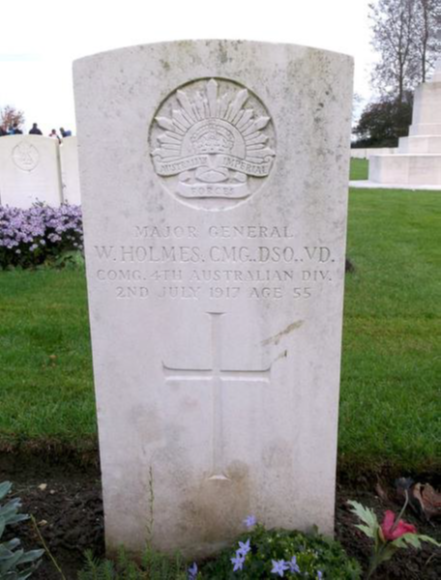
In late January 1917, 4th Division was given the task of capturing a German salient called Cloudy Trench and the nearby Stormy Trench north-east of Gueudecourt. The division’s 15th Battalion stormed the trenches but was driven out by counter-attacks. Holmes was not happy and conducted an interview with the battalion commander to analyse what went wrong. Holmes published his notes and impressions of the interview in the divisional diary and had them promulgated, which “demonstrated [his] hands-on approach” and “showed he was no chateau general.” The trenches were subsequently taken by 13th Battalion and the expected counter-attacks were resisted effectively. When Ludendorff withdrew German forces to the Hindenburg Line in February, 4th Division was taken out of the line for a series of rigorous training courses devised by Holmes, partly to instruct the troops in converting from trench warfare to open warfare. They returned to the front at the end of March in a drive to occupy village outposts before the Hindenburg Line, resulting in the successful capture of Lagnicourt and Noreuil by battalions of 4th Division. Holmes continued his practice of visiting the frontline in his “staff cap with its red band”, which came in for some criticism. Travers defends him on this score, arguing “nothing improved morale more than seeing a senior commander moving around the front-line trenches, gaining firsthand knowledge of the position and appreciating the difficulties the men faced.”
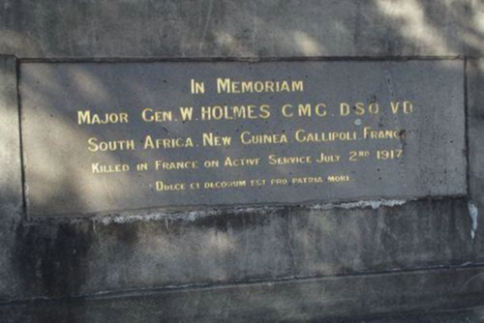
This was to face the ultimate test as Gough’s Fifth Army was earmarked to strike on the Somme as a diversion to Haig’s offensive in the Arras-Vimy Ridge area to the north. Plans were recalibrated after the German withdrawal, with Gough conceiving an attack, by I Anzac Corps and a British Division, along a three kilometer front in the centre of which lay the village of Bullecourt, a salient in the Hindenburg Line. Holmes proposed a plan to launch a brigade against Bullecourt supported by another attack east of that point, but was overruled. Gough, who dreamt of a cavalry breakthrough, ordered that Bullecourt salient was not to be assaulted but bombarded and ‘squeezed out’. Travers observes that “Holmes felt he was being railroaded by higher authority into a rushed and risky attack in an unfavourable sector of the line.” The result on 10 and 11 April was one of the worst tragedies in Australian military history, with 4th Division suffering casualties amounting to 3,289 men, 67 percent of the participants. Bean lamented the damage to “a magnificent instrument, at the zenith of its efficiency.” Travers explains that
Holmes had been placed in an impossible position by Gough. His opinions were ignored and his plans were overruled. He was ordered to attack into a re-entrant on a narrow front, in snow, without proper artillery support, and to use tanks when no one had experience with them … To retain the confidence of his men, he needed to find out exactly what had happened in the action and to explain to the men how the plans had come about. Immediately after the battle was over, Holmes visited the headquarters of the 4th and 12th brigades and spent the afternoon with them. He wrote a report on the battle on 11 April attaching a report of the 4th Brigade battalion commanders … by encouraging his officers to vent their feelings and by being prepared to present their views, verbatim, to the high command, Holmes built up trust in his leadership among the officers and men of the 4th Division.
On 7 May Haig informed his commanders that an attack would be made in a north-easterly direction from the Belgian town of Ypres, with capture of the high-ground of the German held Messines-Wytschaete ridge to the south as an essential precondition. This sector was considered ideal for new ‘bite and hold’ tactics, since the Germans had limited room to manoeuvre for counter-attack. At around that time 4th Division was transferred from I Anzac Corps to II Anzac Corps, thus joining Sir Herbert Plumer’s Second Army. A more effective commander than Gough, Plumer was entrusted with taking Messines ridge. On 7 June the explosion of nineteen mines and an unprecedented artillery barrage heralded commencement of the offensive. British, New Zealand and II Anzac Corps divisions easily captured the first objective, the Black Line across the crest of the ridge, and consolidation began. Fourth Division was ordered to advance to the Green Line at the foot of the ridge. While 52nd and 49th Battalions occupied it to the north, and 47th and 45th to the south, a combination of poorly coordinated artillery support and withering fire from German blockhouses sent them streaming back. Attempts to recapture the Green Line were repeatedly disrupted by friendly artillery fire aimed at protecting the Black Line, until Holmes intervened:
He approached the New Zealand divisional commander … and together they persuaded Godley to change the impractical system of the 4th Division holding the front line with the 25th [British] Division and the New Zealand Division holding the Black Line behind it. From 9:00 am the next morning the front would be controlled, north to south, by the 25th, 4th and 3rd [Australian] divisions, with each controlling the front and its hinterland.
This improved conditions and cleared the way for consolidation of the line and further probes towards the enemy trench system, which made German presence on the ridge untenable. Their commander Crown Prince Rupprecht decided to pull back to a new line 800 metres east, effectively bringing the Battle of Messines to an end. “Holmes’s efforts in going forward to the front line during the battle to ascertain the situation for himself were recognised by Godley in II Anzac Corps’ diary”, notes Travers. It was at this stage, while he was escorting NSW Premier William Holman on a visit to the front at Messines on 2 July that Holmes was struck by a German shell and killed, ironically in the course of taking precautions to avoid dangerous ground. Bean wrote on reflection that “I have never done Holmes justice”, calling him “the first General with outstanding powers of leadership whom the Australian Citizen Force produced.” Travers argues that “had Holmes survived, he would have been in contention for the command of the Australian corps in France in May 1918” rather than Monash. While the question is speculative, it can be said with more certainty that unlike Monash, who was a noted self-promoter, Holmes “did not play politics, letting his actions do the talking.
Reviewed by John Muscat for Reconnaissance, The Magazine of the Military History Society of New South Wales Inc
Contact MHHV Friend about this article.






